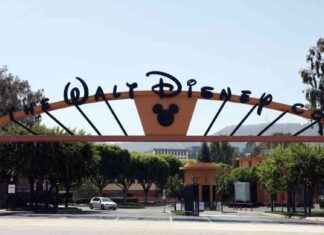Understanding Undecided Voters in the 2024 Presidential Election
As the 2024 U.S. presidential election approaches, the spotlight is once again on undecided voters who are grappling with choosing between two starkly different candidates. In a race that has long been defined by political polarization, these voters play a crucial role in determining the outcome. Among them is Faith, a middle-aged manager of a substance abuse treatment center in southern Pennsylvania, who voted for Donald Trump in 2016 and Joe Biden in 2020.
Faith’s indecision stems from her mixed feelings about both candidates. While she acknowledges Trump’s shortcomings, particularly his “bullying and arrogance,” she admits to not knowing enough about Kamala Harris to make an informed decision. Like many other swing voters, Faith is looking for clarity on Harris’s economic plans and overall vision for the country.
The Complex Nature of Undecided Voters
The precise number of undecided voters is challenging to determine, as most polls do not explicitly offer an “undecided” option. However, pollsters estimate that this group constitutes between 5% and 10% of the electorate, a significant enough percentage to sway the election in key swing states. These undecided voters come from various backgrounds and hold diverse reasons for hesitating to commit to a candidate.
Some undecided voters are classified as “low-information voters,” individuals who only engage with politics sporadically and are just now tuning into the campaign. For them, the decision-making process is often overwhelming, as they scramble to catch up on the candidates’ policies and positions. On the other hand, there are “double haters” who dislike both candidates and are searching for a viable alternative. These voters, who played a pivotal role in the 2016 and 2020 elections, are closely monitoring the candidates’ actions and statements.
Factors Influencing Undecided Voters
Independents, particularly those focused on economic issues, comprise a significant portion of undecided voters. Their primary concern is the candidate’s strategy for improving the country’s economic well-being. This group is looking for concrete plans and policies that address their economic uncertainties and offer a path forward. Additionally, moderate Republicans, like Faith in Pennsylvania, find themselves torn between their dissatisfaction with Trump and their hesitation to align with the more progressive wing of the Democratic Party represented by Harris.
In recent focus groups conducted with swing voters, participants expressed a common sentiment of needing more information before making their decision. Many voters, like Jennifer from Wisconsin and Bryan from Atlanta, highlighted their lack of familiarity with Harris’s economic plans as a deciding factor. While some leaned towards Trump due to their positive recollection of the economy during his tenure, they were hesitant to support him wholeheartedly. Others, like Bryan, were swayed by Harris’s strong debate performance but emphasized the need for more detailed policies to solidify their support.
Appealing to Undecided Voters
The challenge for both candidates lies in appealing to undecided voters who are seeking clarity and substance in their policy proposals. To sway these voters, Trump must pivot from divisive rhetoric and misinformation, focusing instead on reinforcing his economic credentials and presenting a coherent vision for the future. Harris, on the other hand, needs to articulate her economic plans more clearly to address the concerns of undecided voters who are eager for specifics.
As the 2024 election unfolds, the fate of these undecided voters remains uncertain. Their wavering support underscores the importance of engaging with them effectively and addressing their needs and concerns. For both Trump and Harris, the key to winning over this critical voting bloc lies in transparency, authenticity, and a genuine commitment to addressing the issues that matter most to undecided voters.



























